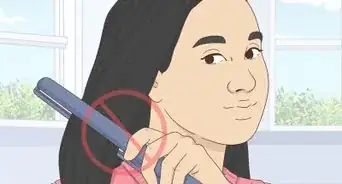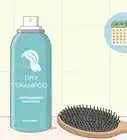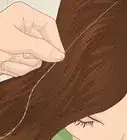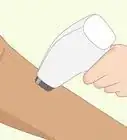This article was co-authored by Nikia Londy and by wikiHow staff writer, Jennifer Mueller, JD. Nikia Londy is a Hair Augmentation Specialist and the Founder and CEO of Intriguing Hair, a one-stop solution for women from all ethnicities wanting to purchase high-quality human hair extensions, hairpieces, and wigs. With over 16 years of experience, she specializes in artificial hair integrations, hair extensions, hair loss, hairpieces and wigs, and non-surgical hair replacement. Nikia holds a BA in Organizational Leadership from Charter Oak State College and received her Cosmetology Certification from Blaine Beauty School. She is also a member of the American Hair Loss Council.
There are 37 references cited in this article, which can be found at the bottom of the page.
This article has been viewed 26,243 times.
People have worn dreadlocks (also called simply "locs") since ancient times. For many Hindus and Rastafari, dreadlocks hold a deep cultural and spiritual significance. But lots of people today wear them simply for aesthetic reasons. If you've always wanted to try locking your hair, now's your chance! Read on to learn everything you need to know to start locs, including which style is best for you, what to expect as your hair grows out, and how to maintain your locs. Enjoy the journey![1]
Steps
Getting Your Locs Started
-
1Use comb coils for an easy method to start locs. There's a reason this is one of the most common ways to start locs—it's easy! Just wash, detangle, and dry your hair, then split it into sections. Place the end of a section of hair between the teeth of a comb and twist it from root to tip to create the coil. Repeat with each section until your entire head is covered.[2]
- Best for: shorter hair (2 to 3 inches (5.1 to 7.6 cm))
- Advantages: locs stay uniform through all the growth stages; easy to do
- Disadvantages: can hurt your scalp as you're putting them in; water can cause the coils to unravel easily; requires a lot of maintenance in the beginning; can take a long time to coil longer hair
-
2Twist and rip straight hair to build tangles. Section your hair in a grid pattern. Split each section into 2 strands, twist them together 2 or 3 times, then rip upwards to tighten the twist and tangle the hair. Keep going until the twist is all the way down to the end, then move on to the next section.[3]
- Best for: straight hair or looser textures
- Advantages: simple methods if you have straight or fine hair; consistent result
- Disadvantages: hair more prone to breakage than with other start methods; locs require more daily maintenance in the beginning
Advertisement -
3Back-comb straight hair if your hair is weak or damaged. Section off your hair, then back-comb the section using a fine-tooth comb. Start close to your roots and work your way down to the ends. Roll the back-combed section between your palms to create a more cylindrical shape.[4]
- Best for: hair 4 inches (10 cm) or longer; straight hair; processed hair
- Advantages: super easy method; gentle for fine or damaged hair
- Disadvantages: locs require a lot of daily maintenance and palm rolling in the beginning; can take a while for locs to tighten up
-
4Try two-strand twists for a tighter look. Section off your hair and split each section into 2 strands. Twist each strand with a comb to make a coil, then twist the coils together in the opposite direction of the direction you twisted each strand. In other words, if you twisted your strands clockwise, you would twist them together counter-clockwise. Keep going until you've covered your whole head.[5]
- Best for: hair 4 inches (10 cm) or longer; straighter, looser textures
- Advantages: locs up faster than comb coils; tighter, neater
- Disadvantages: locs require more daily maintenance in the beginning; can take a while for them to start looking like locs rather than twists
-
5Sponge your hair to develop locs gradually. Buy a curl or twist sponge and rub it over the ends of your hair in a circular motion. Don't apply any pressure—let the sponge do the work.[6] You can go clockwise or counter-clockwise—the direction itself doesn't matter. What matters is that you maintain the same direction consistently throughout the process. Do this for about 10-15 minutes twice a day, every day, and after a couple of weeks you'll see locs start to form naturally.[7]
- Best for: very short hair; coarser hair textures with a tight curl pattern
- Advantages: easy; gives you a more natural, freeform look
- Disadvantages: locs are slow to develop; locs won't be structured or uniform
-
6Start your locs from braids for more control. Section off your hair in a grid pattern and do a 3-strand braid for each section. Then move on to the next section. That's it! If you can braid your hair, you can start locs with braidlocs.[8]
- Best for: hair 5 inches (13 cm) or longer; straighter, looser textures that won't hold a coil or twist
- Advantages: water doesn't unravel braids, so great if you're in the water a lot; hair stays neat throughout your loc journey[9]
- Disadvantages: can take some time for the braid to give way to a loc appearance; can look flat rather than cylindrical; takes a long time to install because of all the braiding
-
7Crochet your hair to get nearly instant locs. Section off your hair, twist the section to hold it in place, then run a crochet hook in and out of the section. The crochet hook interlocks the hair together as you go.[10]
- Best for: hair with a finer texture; straight or wavy hair (but works with any hair type)
- Advantages: get the look you want quickly
- Disadvantages: can break hair and thin roots; can leave a lasting pattern in your hair; can take a long time to put in (10+ hours if you have a lot of long hair)
-
8Interlock your hair for a similar look to crochet without tools. Wrap a rubber band around the end of your section to keep it together. Take the tip of the section and thread it through the middle of the roots. Then, take the tip and thread it through the roots again in the opposite direction. So you're moving in a north to east, then south to west motion. Keep going up the section until all the hair is locked up. It can take a while to get the hang of it, but you'll get in a pattern after you've done a few locs.[11]
- Best for: any hair texture or length
- Advantages: easy to do; doesn't require any tools or products; near-instantaneous locs
- Disadvantages: can be time-consuming to put in; can cause breakage; puts a lot of stress on your roots and scalp
-
9Embrace your hair's natural texture with freeform locs. Freeform locs are perhaps the easiest locs to do because you simply stop brushing your hair and let your hair grow naturally. If you have coarse hair with a tight curl pattern, it will naturally interlock without any interference from you. However, you do have to maintain commitment and be patient with this natural process.[12]
- Best for: coarse hair textures with a tight curl pattern
- Advantages: low maintenance; doesn't require any tools or products
- Disadvantages: could take up to 2 years for locs to form; no control over final look
-
10Get sisterlocks if you want more styleable locs. Sisterlocks are essentially microlocs—tiny locs that cover your head and can be styled more or less like your regular hair. The term "sisterlocks" refers to a trademarked process that uses specific tools, grid patterns, and techniques. Sisterlocks can only be installed by a certified brand consultant, although many locticians can install microlocs using other loc methods.[13]
- Best for: coarse hair textures with a tight curl pattern
- Advantages: more styleable than other types of locs; can be done on relaxed or chemically treated hair
- Disadvantages: must be put in by a professional; can take 8-10 hours to put in; may take up to 2 years for your hair to fully loc[14]
-
11Go with loc extensions for less of a commitment. If you want the look of locs without all the work, loc extensions are a great alternative. Buy extensions in any color and braid them into your natural hair.[15] Then, take textured hair extensions, tie them off at the root and wrap them around each braid.[16] You can also use goddess locs, which are extensions that are already locked up.
- Best for: any hair texture or length
- Advantages: locs look great from day one; easily removed; can experiment with colors and textures; add fullness to your hair; ultimate control over final look
- Disadvantages: can get pricey if done by a professional; can be heavy and put strain on your head and neck if you're not used to wearing extensions
What to Expect
Your hair won't necessarily go through every phase, but this will help you understand what to expect along your loc journey.[17]
-
1Pre-locking/starter phase—3 to 6 months.[18] Your locs are more open and loose and still have somewhat of a spiral shape, if you started with coils or twists. Your hair is likely shinier than usual, but still has basically the same texture it normally has.[19]
- If you start your locs using a crochet or interlock method, you won't go through this phase because those methods are designed to mimic a later phase of loc development.
- Use this phase to establish a system for maintaining your locs and set your routine so your locs are as hassle-free as possible and you won't run into any problems.
-
2Budding phase—3 to 9 months. Your locs start to expand as they create buds—this is how you know your hair is starting to loc together. Your hair doesn't look glossy or shiny anymore but starts to look like real locs. You notice a lot of frizziness, especially if your hair naturally has a tighter curl pattern.[20]
- If you started your locs with twists or braids, the twist or braid pattern starts to diminish and might even disappear completely.
- During this phase, retwist or palm roll your locs every 3-4 weeks to tighten and contract them. The process of expanding and contracting helps your locs mature.[21]
-
3Teenage phase—6 to 18 months. Teenagers are stereotypically unruly and teenage locs are the same way! Some people refer to this as the "ugly" stage, and it might be one of the most difficult phases to get through. As your hair continues to bud and loc up, it shrinks up so it might feel like it's not growing at all.[22]
- This is typically the time during the loc journey when people start questioning their decision to get locs. It's a hump that you just have to get over to get the locs you want.
- Because the budding process is complete, teenage locs give you an idea of the thickness your mature locs will ultimately be.
-
4Mature/adult phase—12 to 36 months. Your locs feel firm and dense and your ends start to seal. After the shrinkage of the teenage phase, your locs start growing and getting longer. You notice less matting and frizz—your locs have come into their own and tend to stay separated.[23]
- If you have looser textured hair, your ends may never seal.[24]
- Towards the end of the adult phase, you know what your locs are ultimately going to look like. They all have a relatively uniform appearance and all traces of your starting method have disappeared.
Loc Care Long Term
-
1Protect your locs with a satin or silk scarf while sleeping. The biggest reason to do this is to keep lint out of your locs. While you'll get any dust and dirt out when you wash your hair, lint is much harder to remove. The scarf also protects against unnecessary breakage.[25]
- You might also want to get a silk or satin pillowcase as additional insurance for your hair in case your scarf slips off at night.
-
2Moisturize your hair with a lightweight oil. After the first month, you can moisturize your hair as often as once a day if you want. Moisturizing your hair prevents unnecessary breakage and damage.[26]
- Avoid coconut oil or olive oil. While they can be fine when mixed with other oils, they don't provide enough moisture on their own.[27]
-
3Wait at least 4 weeks before washing your locs for the first time. This gives your hair some time to do its thing so your locs can get started and you'll have a strong foundation for your journey. Some start methods are more susceptible to water damage than others, but 4 weeks keeps you from reversing all the work you've done.[28]
- This also means not swimming or getting your locs wet for 4 weeks. It's the water that does the damage to your style, not the act of shampooing itself.
-
4Wash your locs once every 1-2 weeks with a residue-free shampoo. Get your locs completely wet, then rub the shampoo directly into your scalp and work up a lather. As you rinse, it will run down and through your dreadlocks to clean them as well.[29]
- Natural, residue-free shampoo is most important in the beginning phases because your locs are looser and more prone to picking up dust and debris.[30]
- There are shampoos specifically made for locs. While you can use one of these, it's not strictly necessary. The most important thing is that any shampoo you use rinses cleanly and doesn't leave any residue behind.
- Never use a deep-conditioner on your locs—deep conditioners are designed to leave residue and you don't want any residue in your locs. It's fine to condition your hair, but make sure it all washes out and don't leave it on your hair for too long.[31]
-
5Dry your locs with a microfiber towel. A microfiber towel doesn't transfer any lint into your dreads, which is super important. Lint is really difficult to get out of your dreads and over time it will cause problems and can even grow mold.[32]
- Before you wrap your locs in the towel, squeeze them out really well. They soak up a lot of water, so squeezing them out will help them dry more quickly.
- If you have a lot of hair or your locs are really dense, you might want to use a hairdryer to dry them completely. They can grow mildew if you let them stay damp for hours on end.
-
6Palm roll your roots to maintain your locs' appearance. Unless you have freeform or neglect locs and you're just letting them do their own thing, tend to your new growth about once a month or so. That'll keep your locs looking neat and tidy.[33]
- Expect your head to be a little sore for a day or two after you tighten your locs. This is normal and just happens because your scalp isn't used to so much stimulation.
- Wait at least 4 weeks before you do this for the first time—that gives your locs time to thicken up.[34]
-
7Separate your roots at least once a month. Over time, some of your locs will start to try to merge with each other. This is especially common for the locs on the back of your head, but it can happen anywhere. Take the time to just separate them out and train the loose hairs where you want them to go.[35]
- If locs merge together, it can be very painful to get them separated. It also typically means a trip to a loctician to fix them, but you can avoid that by paying attention to them and separating them when you need to.
-
8Style your locs loosely and gently. Tight styling puts too much tension on your scalp. It can also cause breakage and other irreversible damage to your locs.[36] Use large hair bands to hold back your locs if you want to put them up or get them off your neck. You can also use a headwrap or a dreadlocks tube if you just want to keep them out of your face.
- You can use tighter styles with mature locs, but newer locs are far more prone to breakage and damage.
- For an easy style, decorate your locs with jewelry.
-
9Use sunscreen and insect repellant when you're outside. Locs mean your scalp is much more exposed than it would probably be otherwise, so make sure you protect it! Wearing a hat or scarf can also protect your head and hair from the elements.[37]
-
10Have patience and enjoy the journey. Unless you decide to go with instant locs or extensions, loc development is a long (and sometimes frustrating) journey. Before you start, be prepared for the fact that it could take 2 years for you to get the look you want. Waiting it out is an exercise in patience, especially during the unruly teenage phase.[38]
- Embrace the changes that your hair is making. During the loc journey, you'll see your hair in a whole new light and understand it better than you ever did.
- If you do decide that locs are not for you, you don't have to shave your head! You can comb out your locs and your hair will be just as healthy as it was when you started.
Warnings
- If you want your locs started by a loctician, let your hair grow 2 to 5 inches (5.1 to 12.7 cm) first. They use special tools and advanced techniques, so they typically need more hair to work with.[41]⧼thumbs_response⧽
- Be patient! It takes time to get the perfect locs!⧼thumbs_response⧽
References
- ↑ https://afrocks.com/blog/everything-you-need-to-know-about-how-to-start-locs/
- ↑ https://youtu.be/vTLhqIae1to?t=170
- ↑ https://youtu.be/hJVSzPQix-E?t=148
- ↑ https://youtu.be/Trw4qgfseds?t=284
- ↑ https://youtu.be/vTLhqIae1to?t=111
- ↑ https://youtu.be/mEGH1_rpRPM?t=160
- ↑ https://youtu.be/5Q7Hp6rGe1o?t=92
- ↑ https://youtu.be/_6UGtA1evlQ?t=88
- ↑ https://youtu.be/ZYB6GEgirY8?t=383
- ↑ https://youtu.be/vTLhqIae1to?t=232
- ↑ https://youtu.be/vTLhqIae1to?t=351
- ↑ https://youtu.be/IY4iI1HJrCo?t=45
- ↑ https://www.sisterlocks.com/faq-for-beginners.html
- ↑ https://afrocks.com/blog/everything-you-need-to-know-about-how-to-start-locs/
- ↑ https://youtu.be/ei-M1m4ukPE?t=51
- ↑ https://youtu.be/ei-M1m4ukPE?t=138
- ↑ https://afrocks.com/blog/everything-you-need-to-know-about-how-to-start-locs/
- ↑ https://youtu.be/IoFj9k5fr1I?t=57
- ↑ https://youtu.be/Ox2xubrXsZU?t=107
- ↑ https://youtu.be/IoFj9k5fr1I?t=229
- ↑ https://youtu.be/Ox2xubrXsZU?t=292
- ↑ https://youtu.be/IoFj9k5fr1I?t=318
- ↑ https://youtu.be/IoFj9k5fr1I?t=481
- ↑ https://youtu.be/Ox2xubrXsZU?t=411
- ↑ https://youtu.be/nsbRaZoeYBI?t=299
- ↑ https://youtu.be/nsbRaZoeYBI?t=360
- ↑ https://youtu.be/nsbRaZoeYBI?t=420
- ↑ https://youtu.be/nsbRaZoeYBI?t=146
- ↑ https://youtu.be/TzbQz98WlpQ?t=107
- ↑ https://youtu.be/X0hokhZ1xCk?t=180
- ↑ https://youtu.be/nsbRaZoeYBI?t=185
- ↑ https://youtu.be/TzbQz98WlpQ?t=17
- ↑ https://caitlincruse.com/dirty-little-secrets-about-dreadlocks/
- ↑ https://youtu.be/nsbRaZoeYBI?t=225
- ↑ https://youtu.be/nsbRaZoeYBI?t=533
- ↑ https://youtu.be/nsbRaZoeYBI?t=241
- ↑ https://caitlincruse.com/dirty-little-secrets-about-dreadlocks/
- ↑ https://youtu.be/nsbRaZoeYBI?t=621
- ↑ https://www.brambleroots.com/starting-locs-from-relaxed-hair-pros-cons/
- ↑ https://www.thetrendspotter.net/dreadlocks-for-women/
- ↑ https://afrocks.com/blog/everything-you-need-to-know-about-how-to-start-locs/
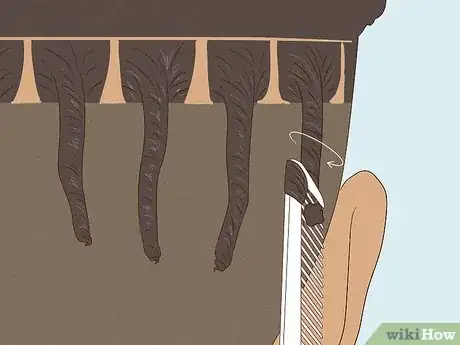

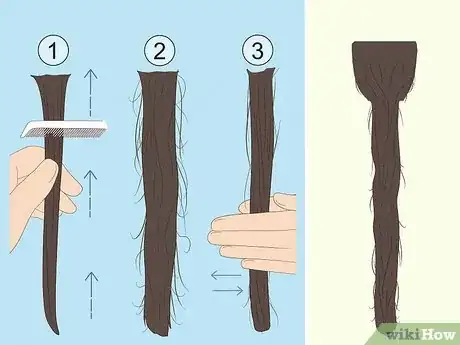
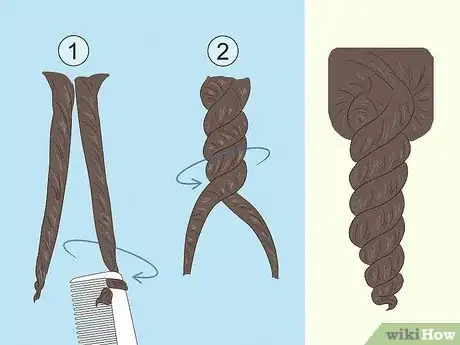
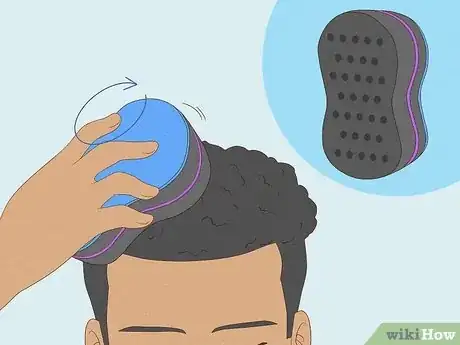

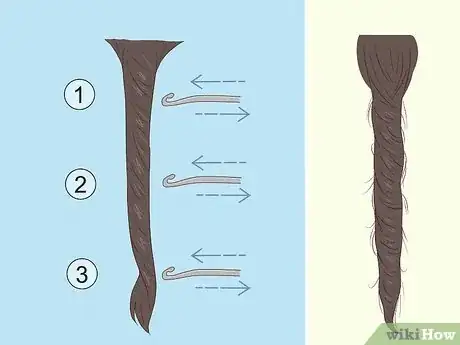




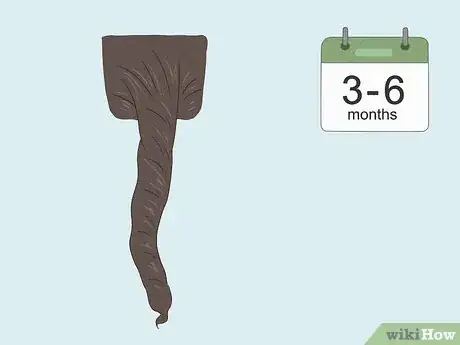

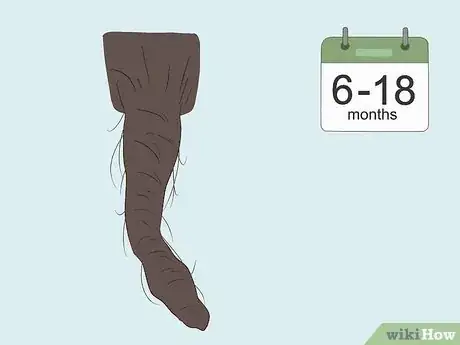
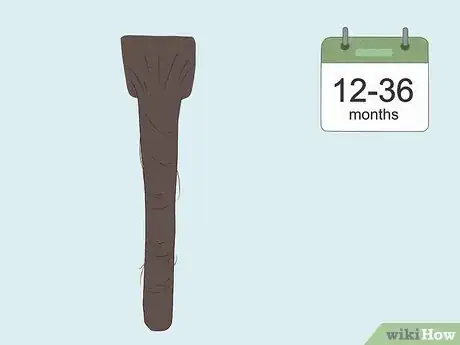
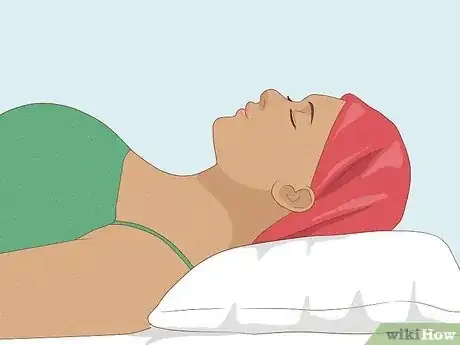
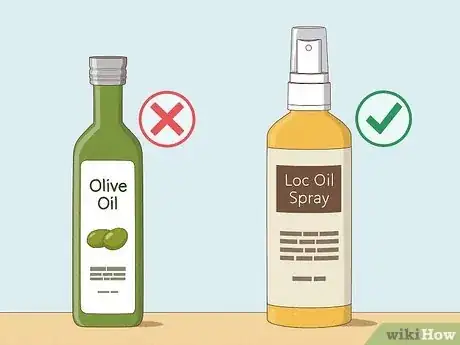

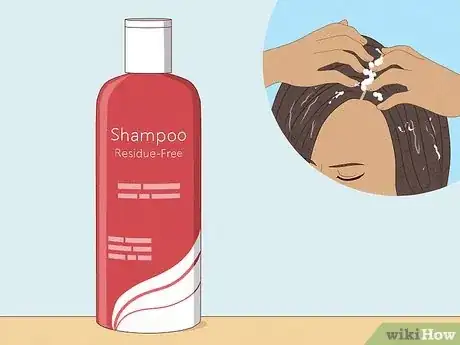
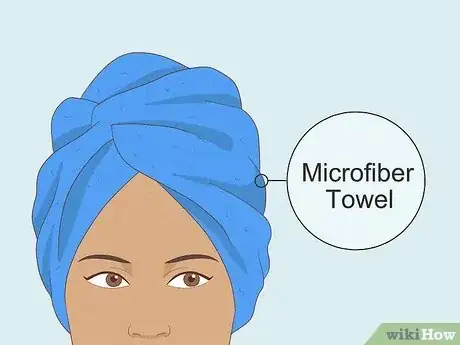
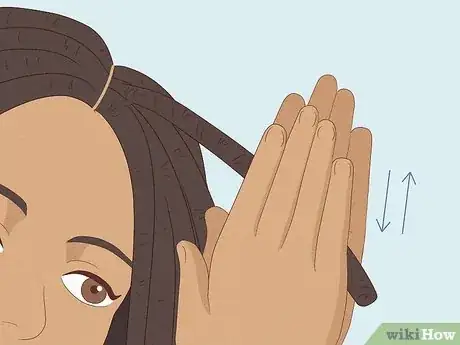


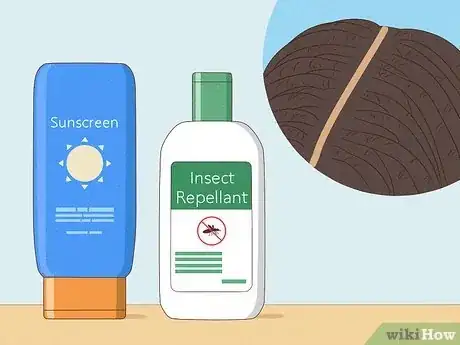
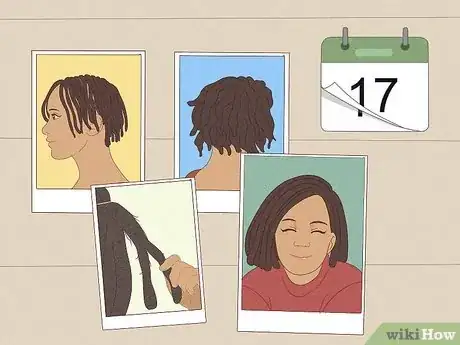
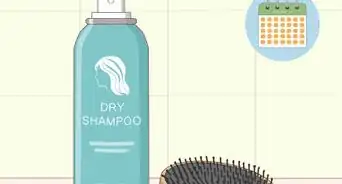
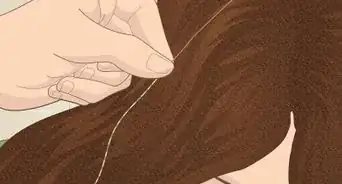
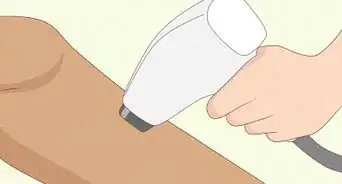
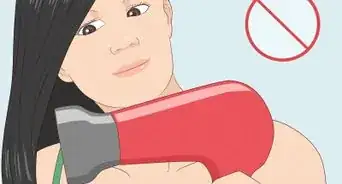
-Step-1-Version-8.webp)

